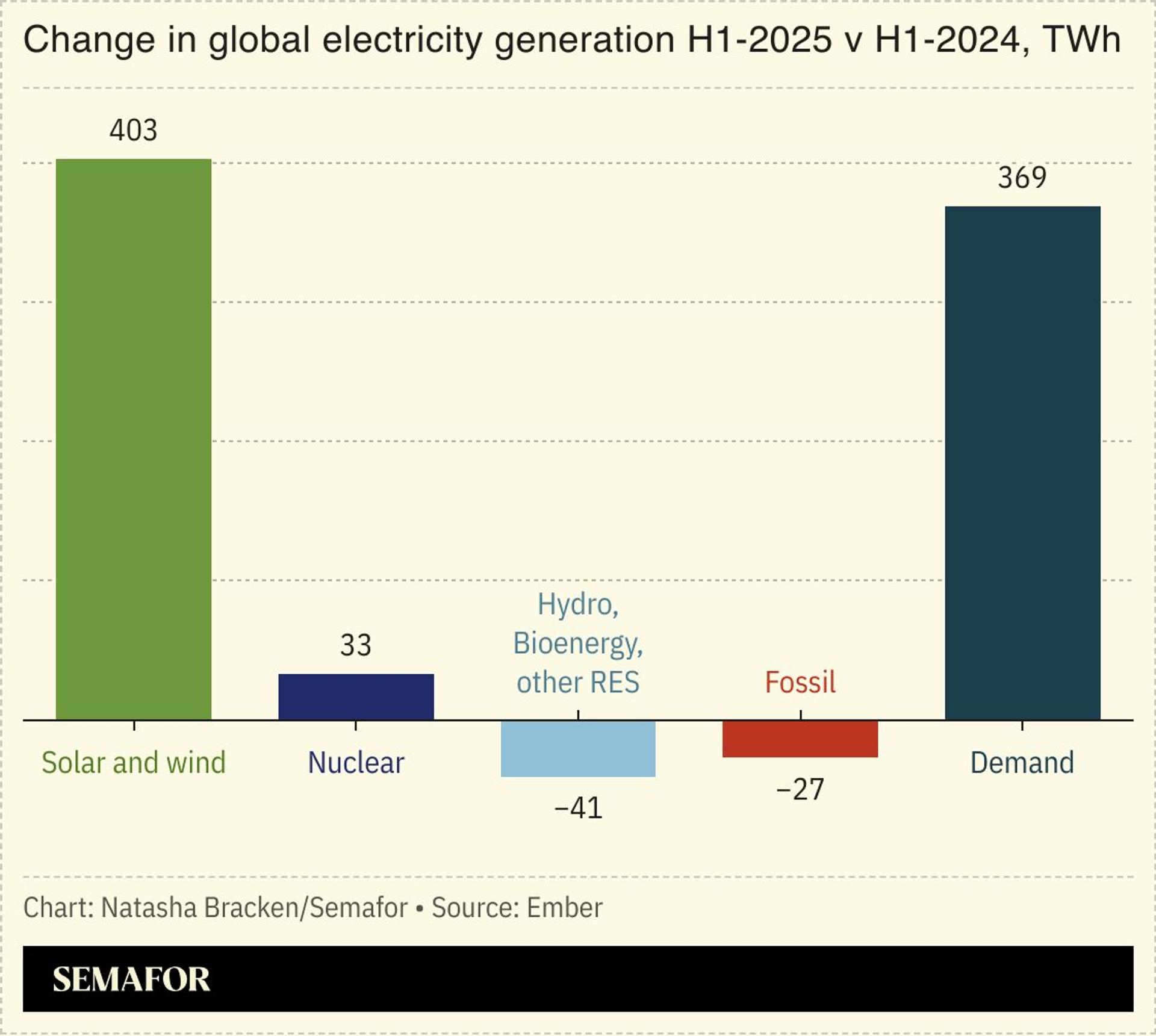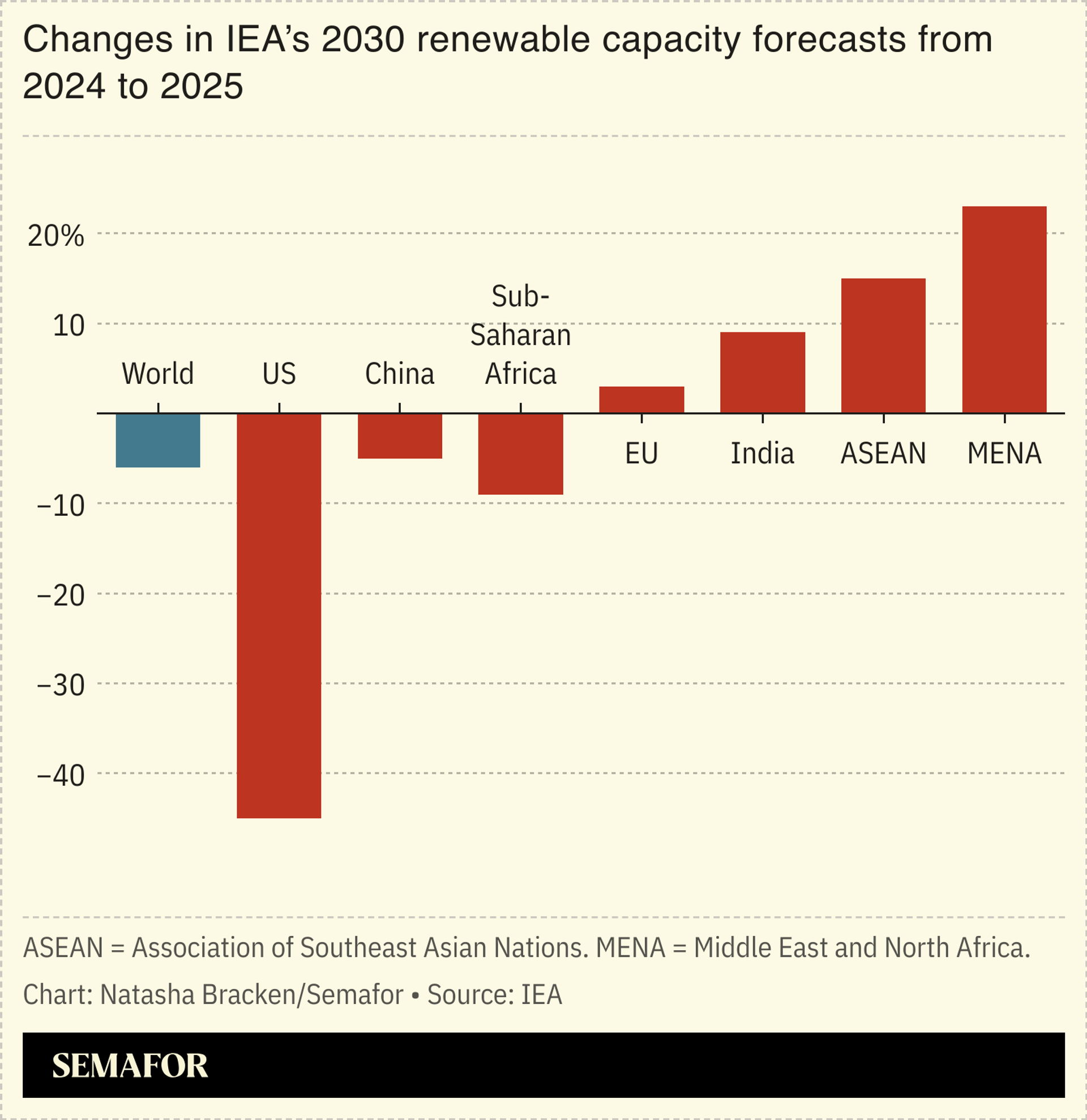Global renewable energy generation surpasses coal for first time
October 7, 2025
Wind and solar power covered all electricity demand growth in the first half of 2025, causing a slight drop in fossil fuel generation, new analysis found.

For the first time, the world’s renewables sites generated more electricity than coal plants, which Małgorzata Wiatros-Motyka, a senior electricity analyst at Ember and author of the report, called “a crucial turning point.” China and India largely drove the rise in renewables and met much of the world’s growing appetite for electricity, leading to a drop in fossil fuel generation in both countries. In contrast, the US and Europe had to burn more fossil fuels to meet demand, and in the EU’s case, to offset weaker wind and hydro output.

In a separate report, the IEA found that global renewable capacity could more than double by the end of the decade, with China remaining the world’s largest market. In the US, however, the agency slashed its forecast for renewables growth by nearly 50% from last year, citing Washington’s rollback of federal tax incentives and President Donald Trump’s move to halt wind and solar projects.
Search
RECENT PRESS RELEASES
Related Post



